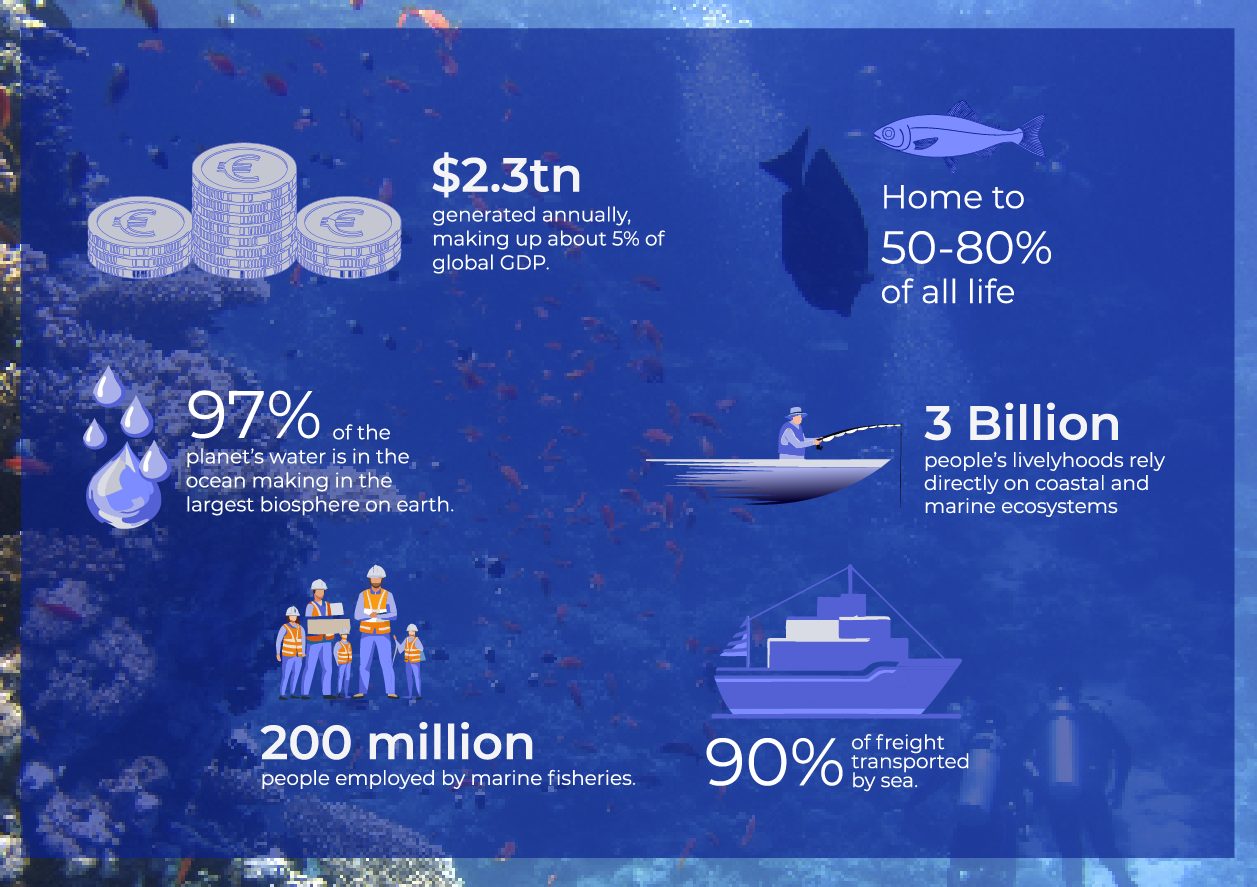Introduction
The oceans and their coastal areas are an essential component of the Earth’s ecosystem, hosting between 500,000 and 10 million species that provide a wide range of ecosystem services. Ocean sustainability embodies the approach required to manage our oceans and the services they provide. For marine environments, satellites equipped with multispectral and hyperspectral imagers have been critical in monitoring oceanic ecosystems for decades. These satellites, with their ability to capture detailed data across various wavelengths, allow for the assessment of slow-growing, patch-forming organisms like coral reefs, kelp forests, seagrasses, and mangroves. Their improved sensitivity to ocean color and other key indicators enhances the monitoring of these essential ecosystems.
Satellite technology plays a critical role in monitoring and managing ocean resources. They provide invaluable insights for addressing ocean sustainability challenges. They monitor pollution levels, track illegal fishing activities, and assess the effects of climate change on marine environments, contributing significantly to the sustainable management of ocean resources.
Understanding Oceanic Sustainability
Ocean sustainability is all about approaching ocean management in a way that protects the ocean and the services it provides. It is, in short, a balancing act between what is good for the health and well-being of the ocean and what is good for the economic well-being of those who depend on the ocean. Ocean sustainability requires the use of ocean resources in ways that preserve the health and resilience of marine ecosystems and improve livelihoods and jobs, balancing protection and prosperity.
There are multiple stressors to coastal ecosystems associated with global change, including warming waters, rising sea levels, reduced oxygen, reduced pH, changing productivity, and sea ice loss. The sea’s ecosystem is also affected by overfishing.
Why Is Maritime Monitoring So Important?
A healthy ocean is vital to our survival. Whether we live by the coast or far inland, the ocean influences the health and well-being of every person on the planet. Here are some key points to consider:
- The ocean produces more than half of the oxygen we breathe.
- It is the largest biosphere on Earth, containing 97% of the planet’s water.
- The ocean is home to 50-80% of all life on Earth.
- It plays a major role in regulating climate and weather patterns.
- The ocean provides nearly 3 billion people with their main source of protein.

- Over 3 billion people rely directly on coastal and marine ecosystems for their livelihoods.
- Ocean resources and industries are estimated to generate around $2.3 trillion annually, making up about 3% of global GDP.
- Marine fisheries employ more than 200 million people, either directly or indirectly.
- Coastal areas account for about 80% of global tourism.
- Approximately 90% of international freight is transported by sea
The Role of Real-Time Satellite Information in Maritime Monitoring Systems
Real-time satellite information refers to the near-instantaneous collection, processing, and delivery of data from satellites orbiting Earth. In the context of maritime monitoring, this allows stakeholders—such as environmental agencies, researchers, and maritime authorities—to access up-to-date observations of oceans, coastal areas, and marine ecosystems. The ability to view data processed within minutes, significantly enhances decision-making by providing timely insights into dynamic conditions such as weather patterns, ocean temperatures, sea level changes, and vessel movements. Real-time satellite data helps in tracking maritime security threats, monitoring environmental changes, and responding to disasters like oil spills or extreme weather events.
Satellite Technologies for Maritime Monitoring
Satellites offer numerous advantages for maritime monitoring, using instruments that can measure ocean depth (bathymetry), color, circulation, sea ice, sea surface height and temperature, as well as weather patterns. Their vantage point from space provides a comprehensive view of the oceans that sea-based vessels cannot achieve. Equipped with a range of microwave sensors, optical imagers, and infrared radiometers, both active and decommissioned Earth observation satellites can track key ocean variables such as currents, sea ice, and sea surface conditions.
Timely data is essential in maritime monitoring systems because it enables proactive and informed decision-making in the face of rapidly changing marine ecosystems. As climate change intensifies, shifts in ocean temperatures, species migration patterns, and extreme weather events are becoming more frequent and unpredictable. Having access to up-to-date information allows policymakers, scientists, and local communities to respond swiftly to emerging threats, mitigate damage, and protect biodiversity. Without timely data, critical changes could go unnoticed until it’s too late, leading to irreversible harm to marine ecosystems, coastal economies, and communities that depend on these resources for their livelihoods and cultural practices.
Applications of Satellite Information in Oceanic Sustainability
- Monitoring Marine Resources: Tracking fish populations and migration patterns, managing fishing activities, and preventing overfishing.
- Environmental Protection: Detecting and monitoring oil spills, plastics, and other pollutants, and assessing the health of coral reefs and other critical habitats.
- Climate Change Impact Assessment: Monitoring sea surface temperatures and ocean currents.
Future Trends in Satellite Monitoring
Emerging technologies such as machine learning and artificial intelligence are set to further enhance maritime domain awareness and the effectiveness of maritime monitoring systems. These advancements can improve the accuracy of satellite data analysis, enabling quicker responses to environmental threats and better resource management.
